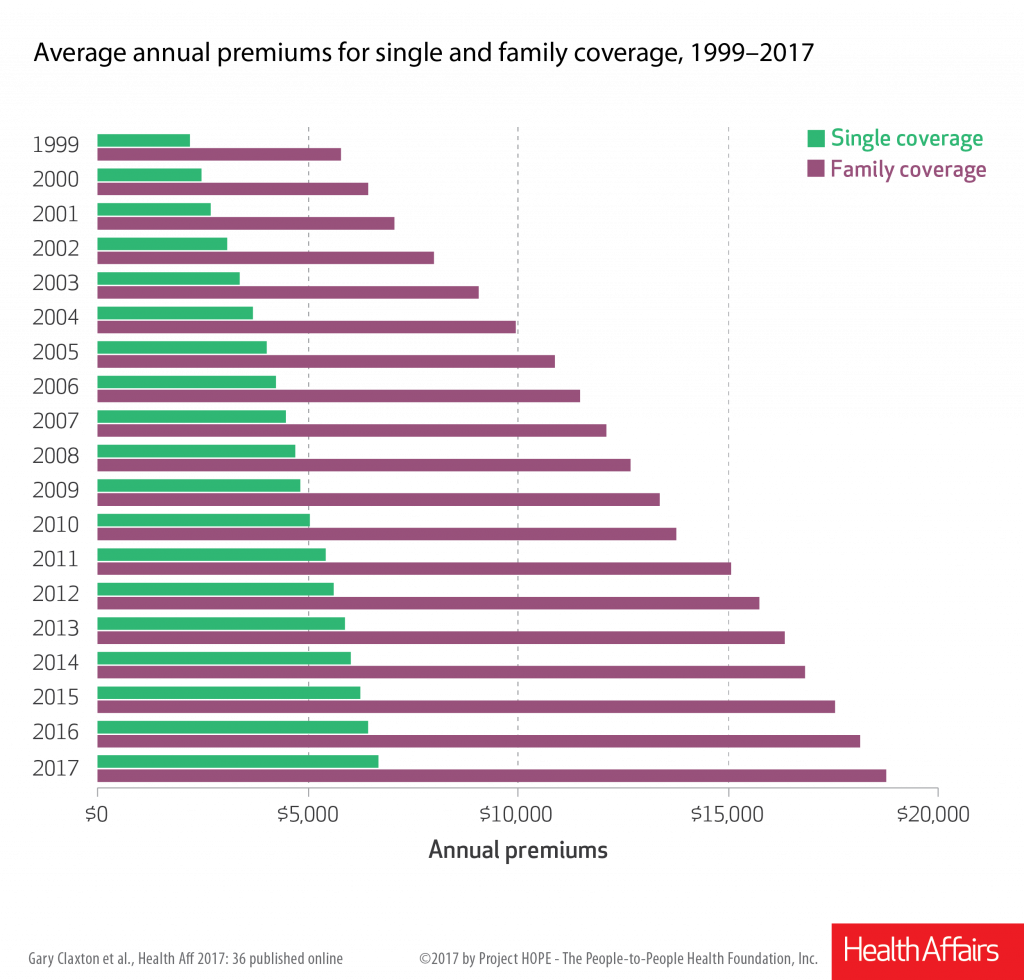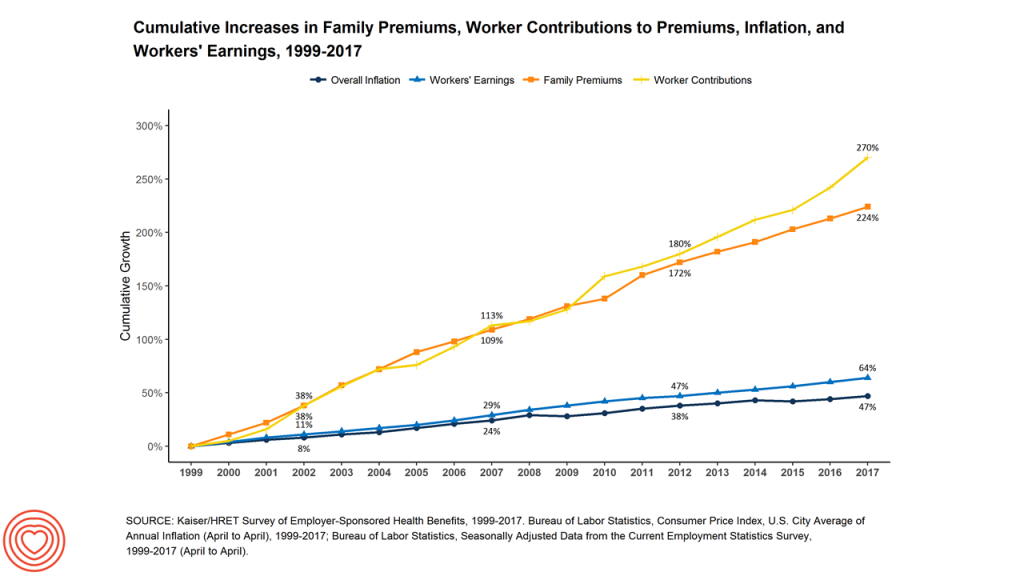
The average cost of an employer=sponsored health plan for a family reached $18,764 in 2017. While this premium grew overall by a historically relative low of 3.4%, employees covered under that plan faced an increase of 8.3% over what their plan share cost them in 2016, according to the 2017 Employer Health Benefit Survey published today by the Kaiser Family Foundation. [Here’s a link to the 2016 KFF report, which provided the baseline for this 8.3% calculation].
Average family premiums at the workplace rose 19% since 2012, a slowdown from the two previous five-year periods — 30% between 2007 and 2012, and 51% between 2002 and 2007, KFF calculated.
This annual study details every aspect of health insurance provided by U.S. companies to workers, and provides important benchmarks year after year on health plan premiums, worker contributions, prescription drug coverage, wellness, and other key issues in employer-sponsored health benefits.
There are significant differences between health benefits provided by small (with 3 to 199 workers) versus large firms (covering 200 or more employees). One-half of firms with fewer than 50 workers offered health benefits in 2017, compared with virtually all companies with over 100 workers offering health insurance. Just over one-half of workers (55%) were covered by health insurance through the workplace in 2017, illustrating the fact that some workers who are offered health coverage at work do not enroll in the plan, often finding the cost prohibitive relative to the family budget.

To reinforce that point, the second chart illustrates what U.S. families have experienced since 1999: it’s a picture of relatively flat wage increases relative to hockey-stick growth of worker contributions for family health premiums. In 2017, the cumulative increase in the worker’s earnings since 1999 was 64% (while general price inflation was a cumulative 47%). Family premiums rose 224%, and workers’ contributions to those premiums, 270%.
Thus, workers continue to trade off wage increases to receive health insurance at the workplace for the better part of two decades. In 2017, the 8.3% growth in health premium cost sharing was over six times the rate of inflation for the year (at 1.4%).
There are many other trends I’ll cover from the KFF survey over the coming days, especially related to prescription drug coverage and wellness programs.
In the meantime, for historical context, here are links to my previous posts covering this important research:
2016 KFF Employer Health Benefits report in Health Populi, 16 September 2016
2015 KFF Employer Health Benefits report in Health Populi, 23 September 2015
2014 KFF Employer Health Benefits report in Health Populi, 10 September 2014
2013 KFF Employer Health Benefits report in Health Populi, 21 August 2013
2012 KFF Employer Health Benefits report in Health Populi, 3 October 2012
2010 KFF Employer Health Benefits report in Health Populi, 3 September 2010
2009 KFF Employer Health Benefits report in Health Populi, 17 September 2009
The post Employees Continue To Pick Up More Health Insurance Costs, Even As Their Growth Slows appeared first on HealthPopuli.com.
Employees Continue To Pick Up More Health Insurance Costs, Even As Their Growth Slows posted first on http://drugsscreeningpage.blogspot.com/
No comments:
Post a Comment